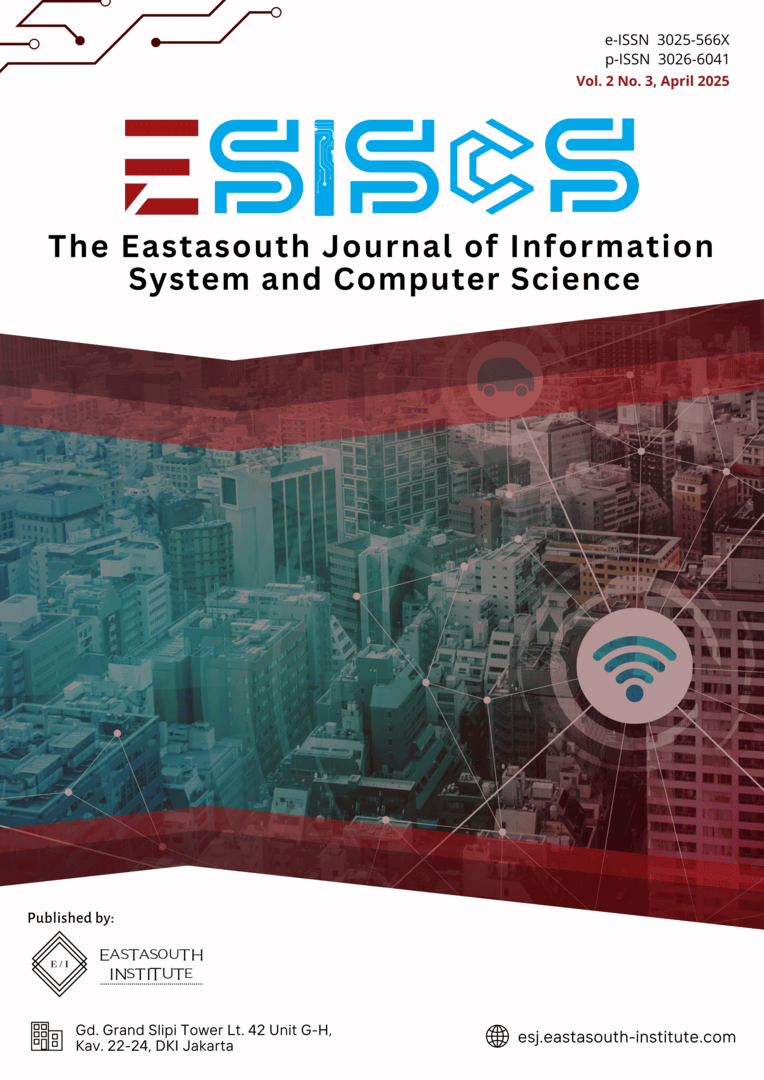Smart, Safe, and Strategic: Transforming HR Data into Actionable Insights Without Compromising Security
Main Article Content
Abstract
In today’s digital age, healthcare organizations are starting to use Human Resource (HR) data to make informed workforce decisions, enhance staffing, promote employee well-being, and navigate the ever-evolving regulatory landscape. This shift is largely due to well-built analytics tools found in platforms like Workday, which provide HR leaders with real-time insights into key metrics such as turnover rates, performance trends, and skills gaps. However, with all these benefits come serious risks. HR data in healthcare often includes very private information like health records, salaries, and personal details. If this information falls into the wrong hands, it can cause legal problems, damage the organization’s reputation, and hurt employees. Because of this, it's not enough to just use data well—it must also be protected at every stage. This paper explores how healthcare institutions can effectively and safely transform HR data into actionable insights through advanced analytics, all while prioritizing data privacy and compliance. It examines modern encryption techniques, privacy-preserving machine learning, and data governance frameworks that empower HR teams to achieve better outcomes securely. By reviewing case studies, peer-reviewed research, and industry best practices, this paper sheds light on the challenges, solutions, and emerging trends that will define the future of secure, data-driven HR ecosystems in healthcare.
Article Details

This work is licensed under a Creative Commons Attribution-ShareAlike 4.0 International License.
References
S. Metha, “The role of cryptocurrency in cross-border transactions: Opportunities and risks for banks,” Int. J. Appl. Eng. Technol., vol. 6, no. 2, pp. 92–100, 2024, doi: 10.13140/RG.2.2.11304.69129.
M. V Lakhamraju, “Workday ERP: Revolutionizing Enterprise Resource planning and human capital management,” Int. J. Sci. Res. Arch., pp. 14(2), 1598–1612, 2025, doi: https://doi.org/10.30574/ijsra.2025.14.2.0535.
K. B. Macha, “Integrating AI, ML, and RPA for end-to-end digital transformation in healthcare,” World J. Adv. Res. Rev., pp. 25(1), 2116–2129, 2025, doi: https://doi.org/10.30574/wjarr.2025.25.1.0264.
E. Brynjolfsson and K. McElheran, “The rapid adoption of data-driven decision-making,” Am. Econ. Rev., pp. 106(5), 133–139, 2016, doi: https://doi.org/10.1257/aer.p20161016.
N. Zhang and W. Zhao, “Privacy-preserving data mining systems,” Computer (Long. Beach. Calif)., vol. 40, no. 4, pp. 52–58, 2007.
W. Raghupathi and V. Raghupathi, “Big data analytics in healthcare: promise and potential,” Heal. Inf. Sci. Syst., vol. 2, pp. 1–10, 2014.
E. Rojas, J. Munoz-Gama, M. Sepúlveda, and D. Capurro, “Process mining in healthcare: A literature review,” J. Biomed. Inform., pp. 61, 224–236, 2016, doi: https://doi.org/10.1016/j.jbi.2016.04.007.
A. Belhadi, S. Kamble, C. J. C. Jabbour, A. Gunasekaran, N. O. Ndubisi, and M. Venkatesh, “Manufacturing and service supply chain resilience to the COVID-19 outbreak: Lessons learned from the automobile and airline industries,” Technol. Forecast. Soc. Change, vol. 163, p. 120447, 2021.
B. W. Wirtz, J. C. Weyerer, and C. Geyer, “Artificial intelligence and the public sector—applications and challenges,” Int. J. Public Adm., pp. 42(7), 596–615, 2019, doi: https://doi.org/10.1080/01900692.2018.1498103.
S. Metha, “AI-Driven Fraud Detection: A Risk Scoring Model for Enhanced Security in Banking,” J. Eng. Res. Reports, pp. 27(3), 23–34, 2025, doi: https://doi.org/10.9734/jerr/2025/v27i31415.
S. Yerra, “The Role of Azure Data Lake in Scalable and High-Performance Supply Chain Analytics,” Int. J. Sci. Res. Comput. Sci. Eng. Inf. Technol., pp. 3668–3673, 2025, doi: https://doi.org/10.32628/CSEIT25112483.
D. W. Bates, S. Saria, L. Ohno-Machado, A. Shah, and G. Escobar, “Big data in health care: using analytics to identify and manage high-risk and high-cost patients,” Health Aff., pp. 33(7), 1123–1131, 2014, doi: https://doi.org/10.1377/hlthaff.2014.0041.
T. H. Davenport and R. Ronanki, “Artificial intelligence for the real world,” Harvard business review, 2018.
K. B. Macha, “Advancing Cloud-Based Automation: The Integration of Privacy-Preserving AI and Cognitive RPA for Secure, Scalable Business Processes,” Dev., pp. 13(1), 14–43, 2023.
R. Venkat, “Harnessing generative AI in product management: Practical use cases from ideation to go-to-market,” Int. J. Sci. Res. Arch., pp. 10(01), 1151–1159, 2023, doi: https://doi.org/10.30574/ijsra.2023.10.1.0710.
Srikanth Yerra, “Enhancing Inventory Management through Real-Time Power BI Dashboards and KPI Tracking,” Int. J. Sci. Res. Comput. Sci. Eng. Inf. Technol., 2025, doi: https://doi.org/10.32628/CSEIT25112458.
D. A. Fernandes, L. F. Soares, J. V Gomes, M. M. Freire, and P. R. Inácio, “Security issues in cloud environments: a survey,” Int. J. Inf. Secur., pp. 13, 113–170, 2014, doi: https://doi.org/10.1007/s10207-013-0208-7.
M. H. Kuo, “Opportunities and challenges of cloud computing to improve health care services,” J. Med. Internet Res., pp. 13(3), e1867, 2011, doi: https://doi.org/10.2196/jmir.1867.
T. C. Rindfleisch, “Privacy, information technology, and health care,” Commun. ACM, pp. 40(8), 92–100, 1997, doi: https://doi.org/10.1145/257874.257896.
M. V Lakhamraju, “The importance of data analytics in business process optimization: A focus on predictive process monitoring,” African J. Biomed. Res., vol. 27, no. 3, pp. 6937–6941, 2024, doi: https://doi.org/10.53555/AJBR.v27i3S.6645.
P. Mittal and R. Malik, “Optimized Physics-Informed Neural Network Framework for Wild Animal Activity Detection and Classification with Real Time Alert Message Generation,” Int. J. Comput. Model. Appl., vol. 2, no. 1, pp. 42–52, 2025.
M. V Lakhamraju, “The Strategic Role of workday Payroll in addressing enterprise Challenges,” Comput. Sci. Eng. Res., vol. 02, no. 01, pp. 3–9, 2025, doi: https://doi.org/10.69517/cser.2025.02.01.0002.
P. Mittal, “AI-Powered Product Analyticsin Med Tech Product Development -From Raw Data to Actionable Insights,” African J. Biomed. Res., 2024, doi: https://doi.org/10.53555/AJBR.v27i4S.6577.
A. Rai, P. Mittal, S. Metha, K. B. Macha, and R. Venkat, “Blockchain technology: Its role in transforming digital products,” Stoch. Model. Comput. Sci., 2024.
S. Yerra, “Optimizing supply chain efficiency using AI-driven predictive analytics in logistics,” 2025, [Online]. Available: https://ijsrcseit.com/index.php/home/article/view/CSEIT25112475
R. Binns, M. Van Kleek, M. Veale, U. Lyngs, J. Zhao, and N. Shadbolt, “‘It’s Reducing a Human Being to a Percentage’ Perceptions of Justice in Algorithmic Decisions,” in Proceedings of the 2018 Chi conference on human factors in computing systems, 2018, pp. 1–14.

